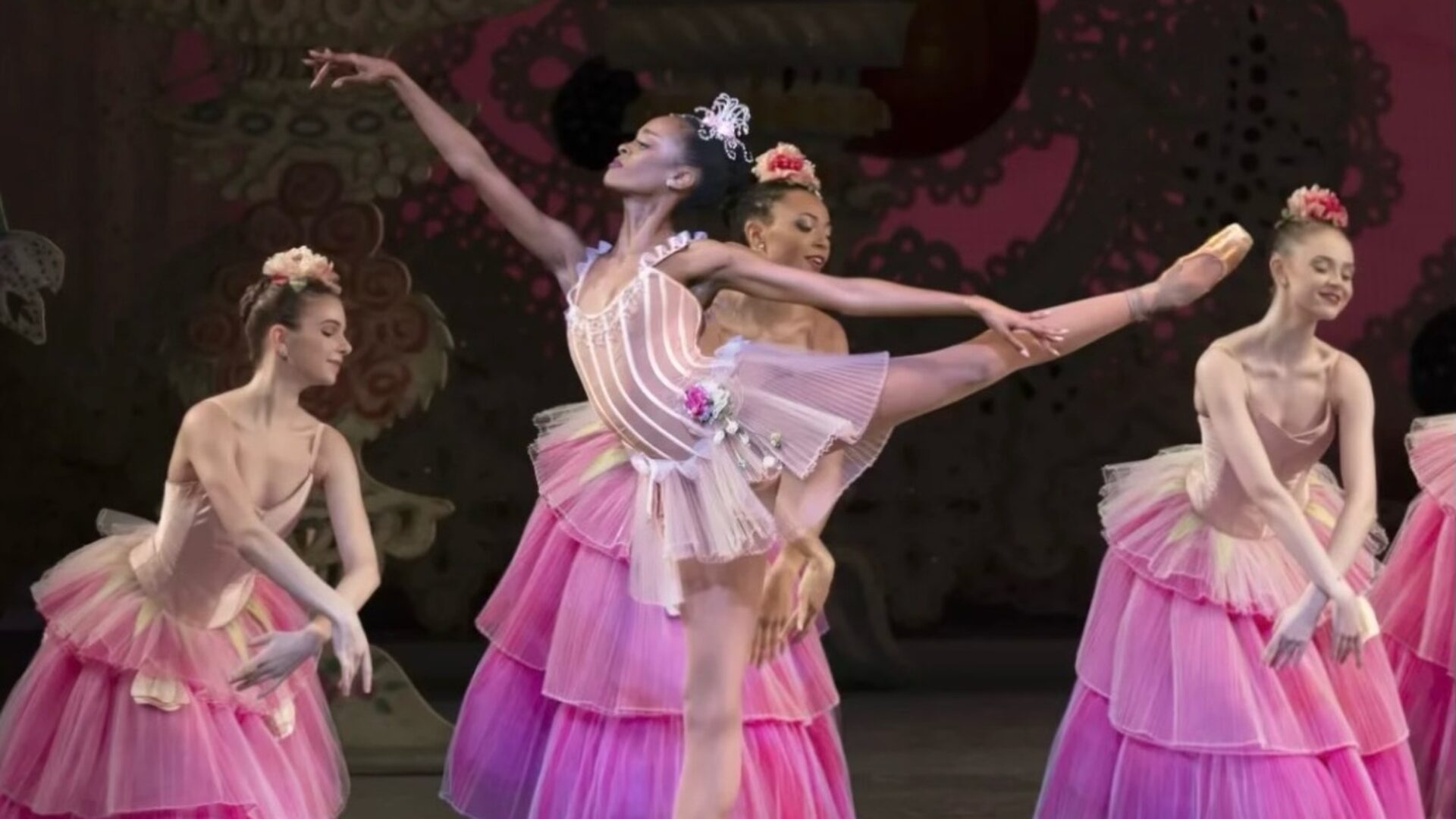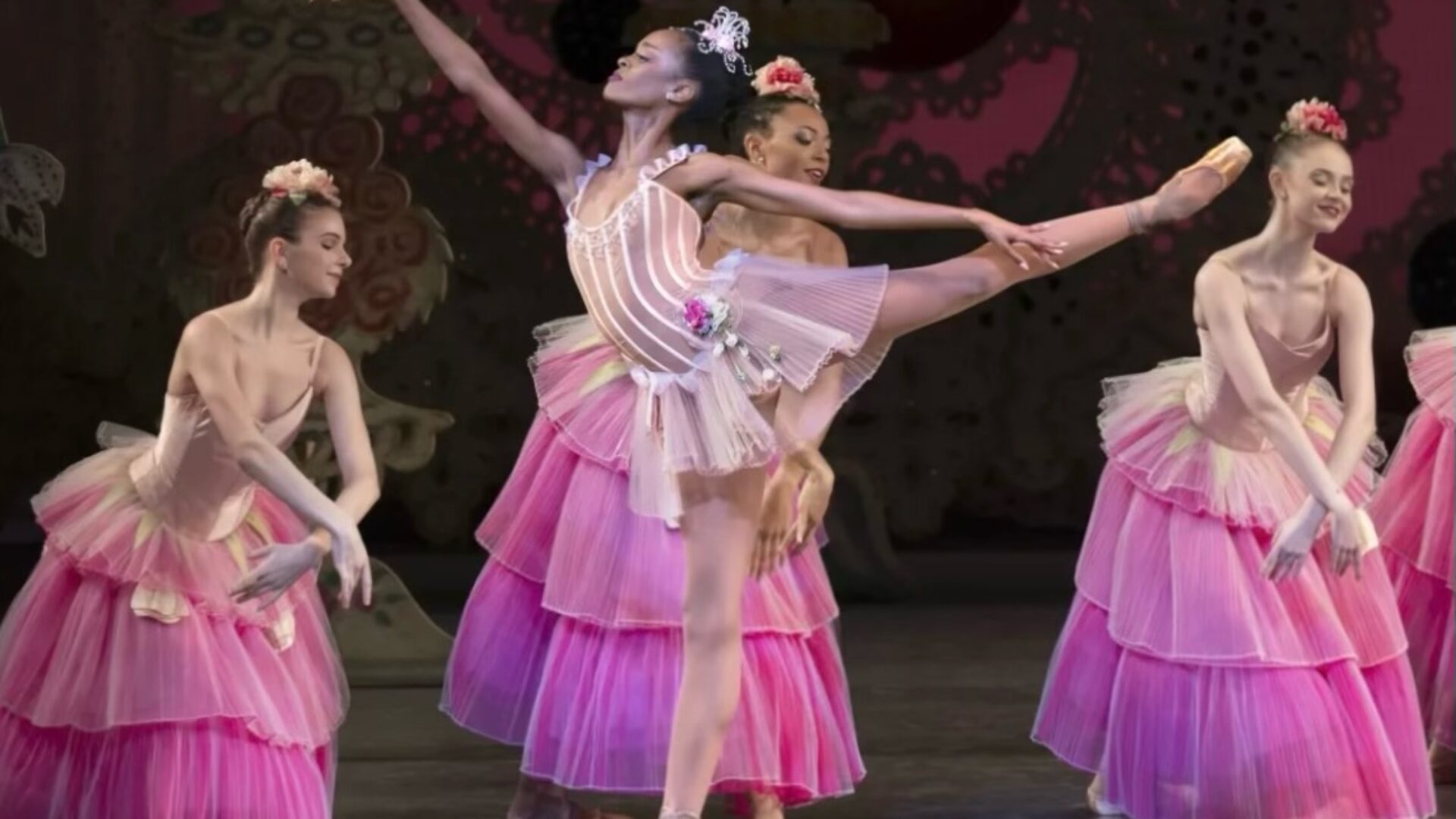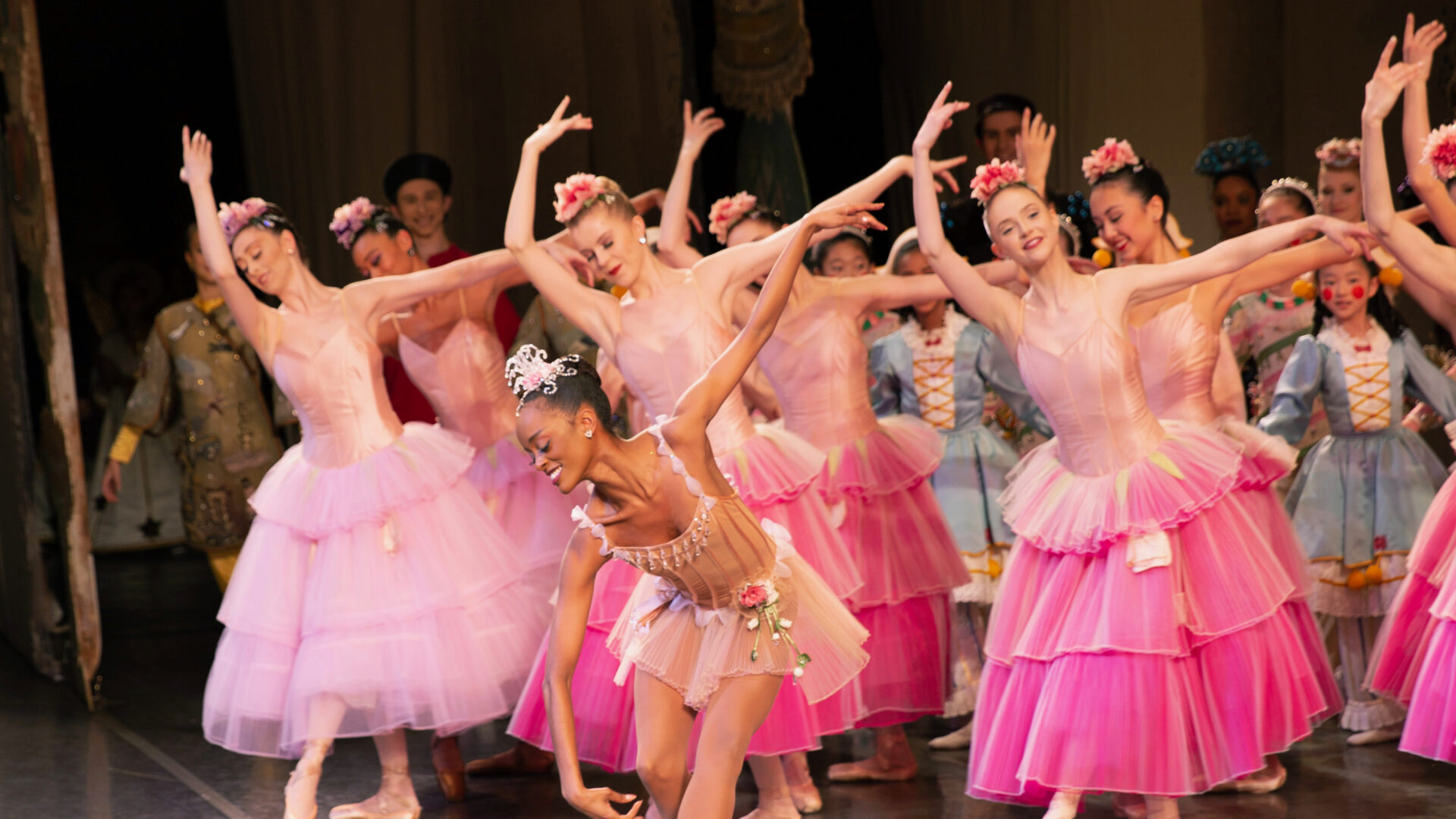
Last December, India Bradley spun onto the stage at Lincoln Center, balancing the dream of decades of Black ballet dancers on her perfectly flesh-tone pointe shoes. As she took her final bow, the energy was both momentous and emotional. “If you’ve never seen someone like me in that position, it would never cross your mind that this could be possible for you,” Bradley tells GU.
The 25-year-old made history as the first Black woman in the 75-year existence of the New York City Ballet to dance the role of Dewdrop in George Balanchine’s The Nutcracker. “It was very important to me,” she says. “Many African-American women went through this company at different times and were not given the opportunity. I can tell you it had 50 percent to do with the fact that they were Black.”
With this same level of confidence, fearlessness and full transparency, the Detroit native approaches every aspect of the conversation. From navigating a traditionally white institution to elevating the ballet industry for the next generation of Black dancers. “Dancing that role would be incredible for any girl,” she says. “Being the first Black woman to dance it, obviously, is a completely different moment. I don’t think anyone ever expected, when George [Balanchine] first choreographed the role, for that to ever be the case.”

Black ballerinas have remained in the margins of large ballet companies for years. Less than five percent of professional ballet dancers identify as African-American; of those, even fewer rise to the title of soloist, principal or prima ballerina. Instead of opting for careers relegated to the corps de ballet, many choose to start their own companies or leave the ballet world altogether. Most notably, Arthur Mitchell, who debuted as New York City Ballet’s first Black dancer in 1955, went on to establish the Dance Theater of Harlem to help provide an alternative option to Black ballerina hopefuls while providing the necessary technical skills for them to soar wherever their careers took them.
“Exposure has a lot to do with it,” Bradley says. “Ballet was originally an outing for the wealthy; that’s still the case in some ways. It’s maintained by having an element of exclusivity where you can only go if you can afford a $100 ticket. If you never know that ballet exists then you’ll never want to be a ballet dancer. It’s that simple,” she says.
Bradley’s path to dance came through having been exposed to the art form by her mother, who enjoyed a career as both a member of the Alvin Ailey American Dance Theater and a choreographer and educator. “She would be teaching master workshops, and I would always be with her,” she says. “I think once I’d gotten to an age where I was old enough to be distracting, she put me in the classes. I don’t think she planned for me to do it professionally, but I just never stopped.”
Bradley, who trained at Mitchell’s Dance Theater of Harlem, was also accepted to the School of American Ballet at 14, where she studied for four years before being offered a job at NYCB. Foregoing college and becoming a professional at one of the world’s most notable companies before the legal drinking age may have been daunting for a normal person. However, Bradley has embraced it as part of her journey. “It takes a lot of time and a certain type of work ethic and mentality that I think you have to naturally be born with,” she says.
Though she has simplified it to a story of DNA meeting proper preparation and a company catching up to the world, it must learn to represent, that doesn’t fully encapsulate what Bradley did the night of her debut. The room was rendered silent as a sea of pink tights parted for her to make her entrance. There was mastery in every step she took. Poise and elegance in every breath extended through to her fingertips. Unmoved by the weight of having to deliver perfection to silence any doubters, Bradley managed to embody what it looks like to be free. “It was a really special experience,” she says. “Doing those steps, in a role that is cherished by some of the most iconic dancers, feeling how it felt to be in the costume, I’ll never forget that.”

No amount of scientific framework or innate excellence readies you to restore the childhood dreams of girls who filed being a ballerina away as an impossibility. But it is not just what she’s been able to do onstage that makes her a true marvel; the way she goes about her career offstage is also noteworthy. From appearing in company advertisements crowned in box braids to being vocal on social issues, she leaves little reason to worry about whether she’ll continue to carve out a place in the history books of ballet. “I haven’t cracked all the codes yet,” Bradley says when asked how she tiptoes through the maze of inclusion. “I don’t expect to crack the code on how white people think because it’s complex.”
Despite stepping into one of the most coveted roles in ballet, questions about why she hasn’t been promoted to soloist or principal rang out on posts applauding her performance. “It’s an interesting thing to consider,” she says.
Having taken on featured roles in new dances from choreographers like Tony winner Justin Peck and the Solange Knowles-scored “Play Time,” Bradley’s star has been rising steadily and, with it, the need to stay focused on the things actually in her control. “Practicing solitude is not bad in this profession,” she says. “I just work hard. Everything else—the snarky comments, passive-aggressive racism and what other people decide to say and do—it’s just none of my business.” Though relegating the distractions to background noise, Bradley also makes room for the idea that her approach may be as much a necessity as it is a personal choice. “Maybe that’s a bandaid, but it’s working for me at the moment,” she says.
For Bradley, her work is the fulfillment of destiny. In that way, the assertion of it being stitched into her very being is right. She is not just a ballerina but a Black woman boldly claiming her rightful place at the top of an industry that never intended to make room for her. Still, she has arrived. Unapologetic in her blackness and undoubtedly worthy of her time in the spotlight. With expert precision, Bradley delicately dances a duet with both the history of those who came before her and the future of those who’ll follow—without missing a beat.